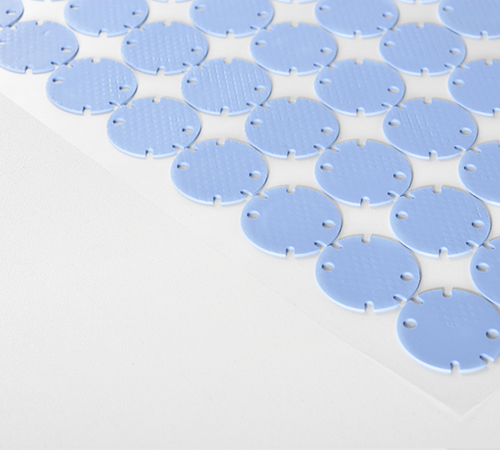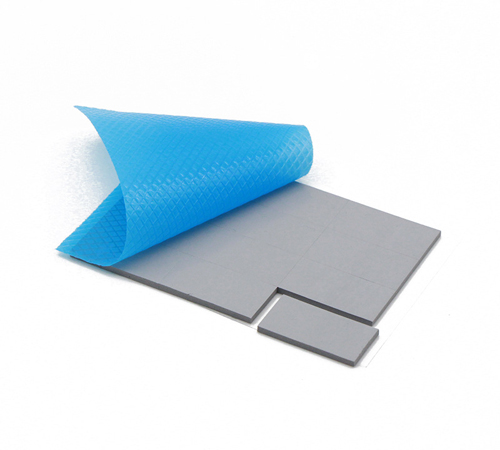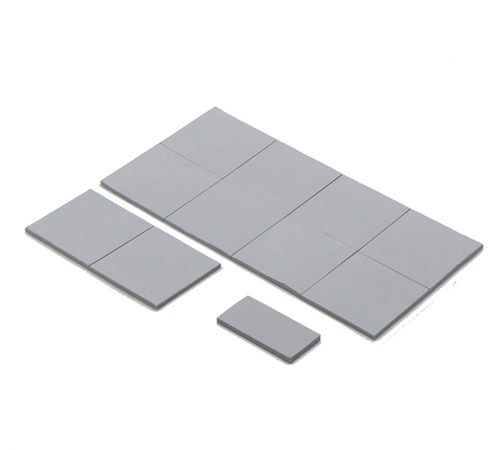Heat Dissipation Silicone Pads: Key Performance Indicators Explored
Author:Nfion Thermal
Date:2024-05-30 09:36:27

Heat dissipation silicone pads, as vital thermal conductivity materials, are widely employed in electronic devices to enhance their heat dissipation capabilities. With the progression of electronics towards miniaturization and high-performance, the performance requirements for heat dissipation silicone pads have escalated. This article delves into the principal indicators of these pads, offering comprehensive and in-depth information and perspectives.
Thermal Conductivity
Thermal conductivity is the pivotal indicator measuring the heat transfer capacity of heat dissipation silicone pads. The higher the thermal conductivity, the better the material's heat conducting performance. Practically, pads with high thermal conductivity are preferred to effectively lower the operating temperatures of electronic devices. Measured in units of W/m.K, common silicone pads exhibit thermal conductivity ranging from 1.0 W/m.K to 10.0 W/m.K, with the choice depending on specific application needs.
Measurement techniques like laser flash or hot wire methods are employed. Laser flash heats the material surface with a pulse and monitors temperature response; hot wire maintains a constant power on a probe to measure temperature rise. Precise measurement is crucial for performance evaluation.
Hardness
Hardness is a critical physical property influencing the pad's application scenarios and ease of installation. Measured using a Shore durometer, typical hardness ranges from 20 Shore C to 60 Shore C. Excessive hardness may exert pressure on components during installation, risking damage, whereas too low hardness may not provide adequate mechanical support.
The selection depends on the application environment and requirements; stiffer materials suit scenarios needing robust support, while softer ones are chosen for good conformity to ensure optimal contact and heat transfer.
Thickness
Thickness significantly affects pad performance. Varying thicknesses cater to different applications. Thinner pads offer better heat dissipation due to lower thermal resistance but may struggle to fill large gaps. Thicker pads excel at filling but increase thermal resistance.
Thickness selection should balance device structure, component spacing, and thermal management needs. Commonly, pads range from 0.5 mm to 20 mm thick, tailored to practical demands.
Temperature Resistance
Temperature resistance is a key performance indicator determining material stability and reliability under high temperatures. Pads must maintain good thermal and mechanical properties over a wide temperature range. Typically, they withstand -40℃ to 200℃, with specialized applications demanding even greater tolerance.
Thermogravimetric analysis (TGA) and differential scanning calorimetry (DSC) assess temperature resistance by tracking mass changes and heat flow variations, respectively.
Breakdown Voltage
Breakdown voltage gauges electrical insulation capability, critical in applications requiring electrical isolation. Higher breakdown voltages denote superior insulation. Pads typically range from 4 kV/mm to 20 kV/mm.
Measured via high-voltage testing equipment, it records the voltage at which material breakdown occurs, vital for ensuring safe operation.
Compression Set
Compression set indicates the degree of deformation under pressure, affecting conformity and lifespan. Materials with excessive compression set can lose elasticity over time, impairing heat dissipation, while those with too little may fail to fill gaps adequately.
Assessed through compression tests, common compression set ranges from 5% to 30%, adjusted per application needs.
Aging Resistance
Aging resistance measures long-term performance stability. Excellent aging properties ensure consistent thermal and mechanical properties over extended use. Evaluated through accelerated aging tests under harsh conditions, it directly impacts longevity and reliability.
Flame Retardancy
Flame retardancy is a safety feature vital in high-temperature or fire-prone environments. Materials with good flame retardancy hinder flame spread, enhancing safety. Assessed via UL 94 standards, common grades include V-0, V-1, V-2.
While additives improve this property, they may affect thermal and mechanical properties, necessitating a balanced approach.
Volume Resistivity
Volume resistivity is another crucial indicator of electrical insulation. Higher values denote better insulation, particularly important for preventing current leakage. Pads often exhibit resistivity above 10^14 Ω·cm.
Measured with resistivity testers, high volume resistivity safeguards against electrical failures, ensuring safe device operations.
Conclusion
Heat dissipation silicone pads, integral to electronic device heat management, directly influence cooling effectiveness and safety. By examining thermal conductivity, hardness, thickness, temperature resistance, breakdown voltage, compression set, aging resistance, flame retardancy, and volume resistivity, we gain a holistic view for selecting pads tailored to diverse applications. In practice, a comprehensive consideration of these parameters based on specific devices and environments is essential for optimal pad selection, ensuring stable operation and longevity.
As technology advances and application needs diversify, the bar for pad performance continues to rise. The future of heat dissipation silicone pads points towards enhanced thermal conductivity, optimized mechanical properties, superior electrical insulation, and prolonged durability, furnishing more dependable solutions for electronic device thermal management.
 CN >
CN >



